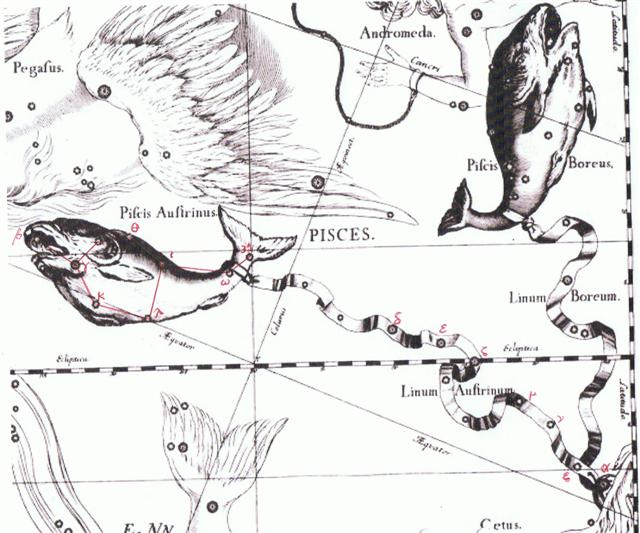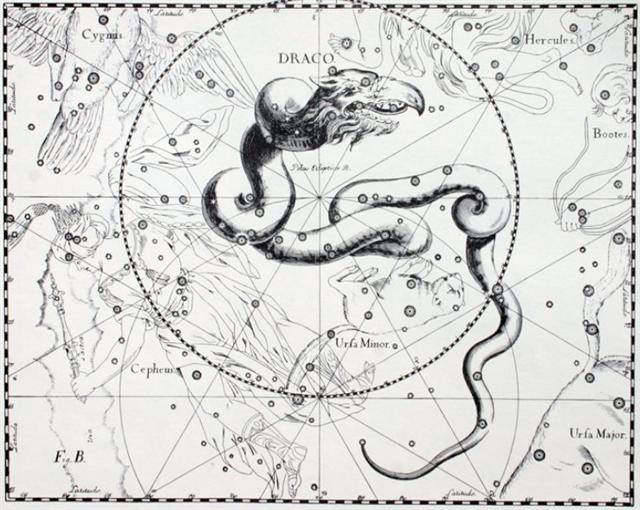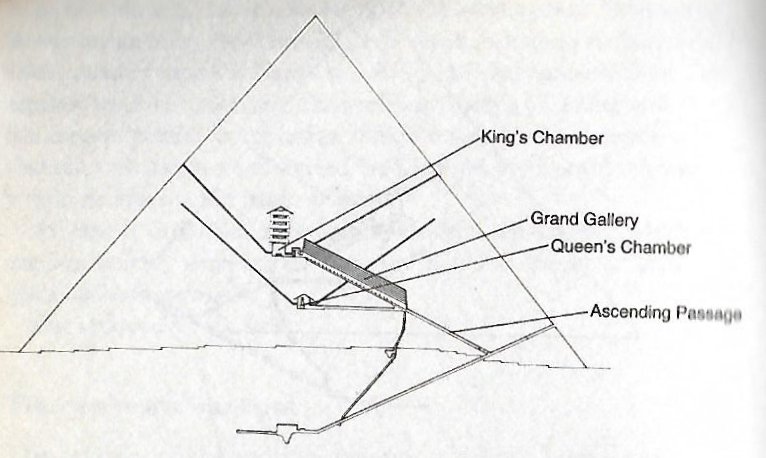Once again. The beginning of side a on the G
tablet contains glyphs which are similar to
those in the 9th text line on side b of the B tablet:
|
MARCH 26 (85) |
27 (*6) |
28 |
29 (88) |
 |
 |
 |
 |
|
Ga1-5 |
Ga1-6 |
Ga1-7 |
Ga1-8 |
|
May 29 |
30 (150) |
31 |
June 1 (152 = 115 + 37) |
|
... On the
twenty-fifth day of the first
month (Vaitu Nui), Ira
and Makoi set sail; on
the first day of June ('Maro'),
the bow of Ira's canoe
appeared on the distant horizon,
came closer and closer on its
course, and sailed along, and
finally (one) could see the (new
home) land ... [E:17] |
 |
 |
 |
 |
| kava o te
ariki |
e huarae -
ma to rima - ki te ragi |
e rere ia
mai - ki to huki |
ko to huki ka to ihe - kua
reva te ika |
|
Bb9-24 (350) |
Bb9-25 |
Bb9-26 |
Bb9-27 (353) |
|
Rae. First (always
follows the noun): te tagata
ra'e, the first man; (the
other ordinal numerals, second,
third, etc., precede the noun.
Translator's note: ra'e
is likely the noun which means
forehead, face, in other
Polynesian language, e.g.
Tahitian rae). Vanaga. 1.
Commencement, beginning, to
strike up, to essay, to
occasion, to proceed, former,
primitive, precedent,
predecessor, first-fruits;
rae ki te mea hou, to
innovate; oho rae, to
march at the head; tagata rae,
advance guard, van; raega,
commencement, beginning,
occasion, first-fruits. 2. To
attack, to provoke; kakai rae,
toua rae, to provoke.
Churchill. |
|
Dec 16 (85 + 265) |
17 (351) |
18 |
19 (88 + 265) |
|
(250, Sept 5) |
(251, 6) |
(252, 7) |
(253, 8) |
|
JULY 5 (186) |
6 (251 - 64) |
GREDI (188) |
8 (253 - 64) |
|
OBSERVED CLOSE TO THE FULL MOON: |
 |
 |
 |
 |
|
Ga4-23 |
Ga4-24 |
Ga4-25
(108 = 188 - 80) |
Ga4-26 |
|
KERB |
*354 = 251 - 80 + 183 |
*355 |
*356 |

... With
α
Andromedae [Sirrah → Navel] and
γ
Pegasi [Kerb], as the Three
Guides, it [Caph →
Phoenician Kaph, Hand] marks the
equinoctial colure, itself
exceedingly close to that great
circle; and, being located on
the same side of the pole as is
Polaris, it always affords an
approximate indication of the
latter's position with respect
to that point. This same
location, 32º from the pole, and
very near to the prime meridian,
has rendered it useful for
marking sidereal time. When
above Polaris and nearest the
zenith the astronomical day
begins at 0 hours, 0 minutes,
and 0 seconds; when due west the
sidereal time is 6 hours; when
south and nearest the horizon,
12 hours, and when east, 18
hours; this celestial clockhand
then moving on the heavenly dial
contrary to the motion of the
hands of our terrestrial clocks,
and at but one half the speed
...
...
τ,
4.5, with
υ,
was Al Sufi's Sa'd al Na'amah,
which Knobel thinks should be
Al Na'āim, the Cross-bars
over a well; but they also were
known as Al Karab, the
Bucket-rope. The usual titles
for
τ
- Markab and Sagma
or Salma - are from
Bayer, but the last two should
be Salm, a Leathern
Bucket ... |
Although the glyphs are evidently
illustrating different points of view:
|
 |
 |
|
MARCH 26 |
kava o
te ariki |
The First King (te ariki ra'e)
might be the reading of Ga1-5.
According to Manuscript E this should
then be Ko Oto Uta [E:1] a name
which indicates moving up from the sea
and inlands.

In March
25 was the Julian spring equinox.
Uta.
Higher up (from the coast, or
from another place); i uta era,
further up, up there; ki î te îka i
uta, as there are lots of fish on
the beach. Vanaga. 1. Inland, landward;
paepae ki uta, to strand, to run
aground; mouku uta, herbage. 2.
To carry; uta mai, to import;
hakauta, to give passage. Campbell.
And the change from the quarter of the Sea to Land
ought to have occurred at the Knot (Al-risha),
the last star of Pisces according to my
list:

... This [σ
Sagittarii] has been identified with
Nunki of the Euphratean Tablet of
the Thirty Stars, the Star of the
Proclamation of the Sea, this Sea
being the quarter occupied by Aquarius,
Capricornus, Delphinus, Pisces, and
Pisces Australis. It is the same space
in the sky that Aratos designated as
Water ...
|
E tupu |
ki roto |
o te hau tea |
ki te henua - te maro |
rutua |
|
Rutu.1. To
read, to recite, to
pronounce words
solemnly; he-rutu i
te kohau motu, to
read the rongorongo
tablets; hare rutu
rogorogo mo hakama'a ki
te ga poki ite kai, i te
rogorogo, rongorongo
school, house in which
children were taught
reading and writing the
rongorongo signs. 2. To
pelt with stones. 3. To
gather in great numbers
(of people). Vanaga.
Sound.
Rutu-rongorongo =
the sound of recitation.
Barthel. T. Beat. Henry.
To recite; tae rutu,
irreverence. Churchill.
Pau.: rutu, a
drum. Mgv.: rutu,
to beat, to cause to
resound. Ta.: rutu,
a drum, to drum. Mq.:
utu, to drum. Sa.:
lutu, to shake a
rattle. Churchill.
 |
 |
 |
 |
 |
 |
|
Cb1-1 (393) |
Cb1-2 |
Cb1-3 |
Cb1-4 (396) |
Cb1-5 |
|
CLOSE TO THE SUN: |
|
17 (91 + 16)
Al Sharatain-1 /
Ashvini-1 /
Bond-16 (Dog) /
Mahrū-sha-rishu-ku-1
(Front of the Head of
Ku)
SEGIN = ε Cassiopeia,
MESARTHIM = γ Arietis, ψ
Phoenicis
(27.2),
SHERATAN (Pair of Signs)
= β Arietis, φ Phoenicis
(27.4)
*351.0 = *27.4 - *41.4 |
18
(108)
ι Arietis (28.0), λ
Arietis (28.2), υ Ceti
(28.8) |
19
ALRISHA (The Knot) = α
Piscium,
χ Phoenicis (29.2),
ε Trianguli (29.4),
ALAMAK (Caracal) = γ
Andromedae
(29.7)
*353.0 = *29.4 - *41.4 |
April 20
Arku-sha-rishu-ku-2
(Back of the Head of Ku)
2h (30.4)
κ Arietis (30.3),
HAMAL (Sheep) = α
Arietis
(30.5)
ALKES (α
Crateris) |
21 (111)
DELTOTUM = β Trianguli
(31.2), ι Trianguli
(31.7), η Arietis (31.9) |

... The present limit of
the celestial polar
regions can be defined
from the declination of
the star
γ
Andromedae
... Its current place is
at declination 42º 05'
N. In other words the
measure across the polar
regions should be 2 *
(90º - 42º 05') = 2 *
47º 55' = 95º 50' or
around 96º. The width of
the polar regions is
thus around 2 * 96º =
192º
and 360 - 192 =
168 = 2 * 84 (→ Julian
spring equinox).
...
Gamma Andromedae
... is the third
brightest star in the
constellation of
Andromeda. It is also
known by the traditional
name Almach (also
spelt as Almaach,
Almaack, Almak,
Almaak, or
Alamak), from the
Arabic
العناق
الأرض
al-‘anāq al-’arđ ...
'the
caracal' (desert lynx).
Another term for this
star used by medieval
astronomers writing in
Arabic was
آلرخل
المسلسلة
Al
Rijl al
Musalsalah 'the
Woman's Foot'. In
Chinese,
天大將軍
(Tiān Dà Jiāng Jūn),
meaning Heaven's
Great General,
refers to an asterism
consisting of γ
Andromedae, φ
Persei, 51 Andromedae,
49 Andromedae, χ
Andromedae, υ
Andromedae, τ
Andromedae, 56
Andromedae, β
Trianguli, γ
Trianguli and δ
Trianguli. Consequently,
γ
Andromedae itself is
known as
天大將軍一
(Tiān Dà Jiāng Jūn yī,
English:
the
First Star of Heaven's
Great General.)
In the catalogue of
stars in the
Calendarium of Al
Achsasi al Mouakket,
this star was designated
جمس
ألنعامة
Khamis al Naamat,
which was translated
into Latin as Quinta
Struthionum, meaning
the fifth ostrich
... |
|
ko Sive (*351). |
ko Ngehu. |
ko Hatu (*353).
|
ko Tuki. |
ko Bu (*355). |
|
Hatu.
1. Clod of earth;
cultivated land; arable
land (oone hatu).
2. Compact mass of other
substances: hatu
matá, piece of
obsidian. 3.
Figuratively: manava
hatu, said of
persons who, in
adversity, stay composed
and in control of their
behaviour and feelings.
4. To advise, to
command. He hatu i te
vanaga rivariva ki te
kio o poki ki ruga ki te
opata, they gave the
refugees the good advice
not to climb the
precipice; he hatu i
te vanaga rakerake,
to give bad advice. 5.
To collude, to unite for
a purpose, to concur.
Mo hatu o te tia o te
nua, to agree on the
price of a nua
cape. 6. Result,
favourable outcome of an
enterprise. He ká i
te umu mo te hatu o te
aga, to light the
earth oven for the
successful outcome of an
enterprise. Vanaga. 1.
Haatu, hahatu,
mahatu. To fold,
to double, to plait, to
braid; noho hatu,
to sit crosslegged;
hoe hatu, clasp
knife; hatuhatu,
to deform. 2. To
recommend. Churchill. In
the Polynesian dialects
proper, we find Patu
and Patu-patu,
'stone', in New Zealand;
Fatu in Tahiti
and Marquesas signifying
'Lord', 'Master', also
'Stone'; Haku in
the Hawaiian means
'Lord', 'Master', while
with the intensitive
prefix Po it
becomes Pohaku,
'a stone'. Fornander.
|
|
Gregorian equinox |
'March 22 (81) |
23 (107 - 29) |
24 |
Julian equinox |
|
7 (66 = 80 - 14) |
"March 8 |
9 (68) |
10 |
11 |
|
CLOSE TO THE FULL MOON: |
|
MUPHRID (Solitary Star)
= η Bootis
(210.1), ζ Centauri
(210.3) |
φ Centauri (211.0), υ¹
Centauri (211.1), υ²
Centauri (211.8), τ
Virginis (211.9) |
AGENA (At the Knee) = β
Centauri
(212.1), θ Apodis
(212.5),
THUBAN (Dragon) = α
Draconis
(212.8) |
14h (213.1)
π Hydrae, χ Centauri
(213.0),
MENKENT (Shoulder of the
Centaur) = θ Centauri
(213.1) |
Neck-2 (Dragon)
ASELLUS TERTIUS (3rd Ass
Colt) = κ Bootis, κ
Virginis, 14 Bootis
(214.8) |

...
The sky should be moving
(rutua te maeva)
at the Caracal - when
the Full Moon would have
been at right ascension
day *29.4 + *365¼ / 2 =
*212 = at Thuban
...

...
Thuban had been the star
at the North Pole when
the great Egyptian
pyramids where built ...
The star could be seen,
both by day and night,
from the bottom of the
central passage of the
Great Pyramid of Cheops
(Knum Khufu) at
Ghizeh, in 30° of north
latitude, as also from
the similar points in
five other like
structures; and the same
fact is asserted by Sir
John Herschel as to the
two pyramids at
Abousseir ...

...
For some reason, too, it
had taken their fancy to
place the Great Pyramid
almost exactly on the
30th parallel at
latitude 29º 58' 51".
This, a former
astronomer royal of
Scotland once observed,
was 'a sensible
defalcation from 30º',
but not necessarily in
error: For if the
original designer had
wished that men should
see with their body,
rather than their mental
eyes, the pole of the
sky from the foot of the
Great Pyramid, at an
altitude before them of
30º, he would have had
to take account of the
refraction of the
atmosphere, and that
would have necessitated
the building standing
not at 30º but at 29º
58' 22' ... |
|
'Sept 20 (236 + 27) |
21 |
Equinox |
23 |
24 (267) |
|
|
.jpg)
|














.jpg)